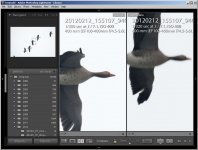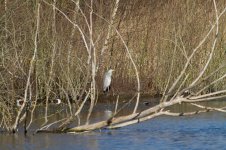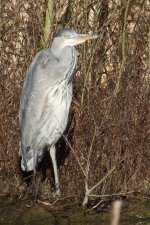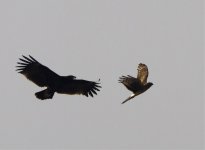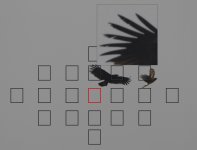I've never managed to get an awesome, detailed result with the birds filling a very small part of the frame.

As a result of this thread I did try practicing a little on distant birds, both in flight and settled. With BIF, shooting in short bursts I did notice variations in quality from frame to frame, with some being almost usable at 100% and others bearing some similarity to the OP's example, although not so severe.
The first example below (Attachment 1) shows two consecutive frames fired with my 1D3 in a burst, with one being pretty decent and the next being very ropey. You might notice that the first shot had a little fill flash thrown into the mix, resulting in a 1/300 shutter speed, whereas the subsequent shot has no flash and is at 1/320. I don't see that the use of flash makes a scrap of difference to the sharpness, but I point it out just in case anyone thinks it might. It seems clear from the change to the framing that I had some vertical camera shake, and just a slight error in horizontal tracking too, and this has affected the second shot severely. If I had only fired one shot rather than a burst I might well have had the second outcome and been scratching my head searching for an equipment fault, where actually the fault would be mine.
I also tried a less demanding target with my 7D in better light, still at a distance, and while it's no prizewinner I think it would just about escape the recycle bin. Attachment 2 is the whole frame. Attachment 3 is a 100% crop with a helping hand from Lightroom. I don't doubt that using a prime lens and a tripod would have yielded better results, but I had to make do with my hand held 100-400. As I was already at the water's edge I had no plans to try to move closer.

I can certainly understand that trying to wave 700mm of glass at a distant bird, with the ISO bumped up and cropping to 100% from a 7D is going to expose a few warts, and while I wouldn't advocate "spray and pray" as a technique for every occasion, it might have been the solution this time.





